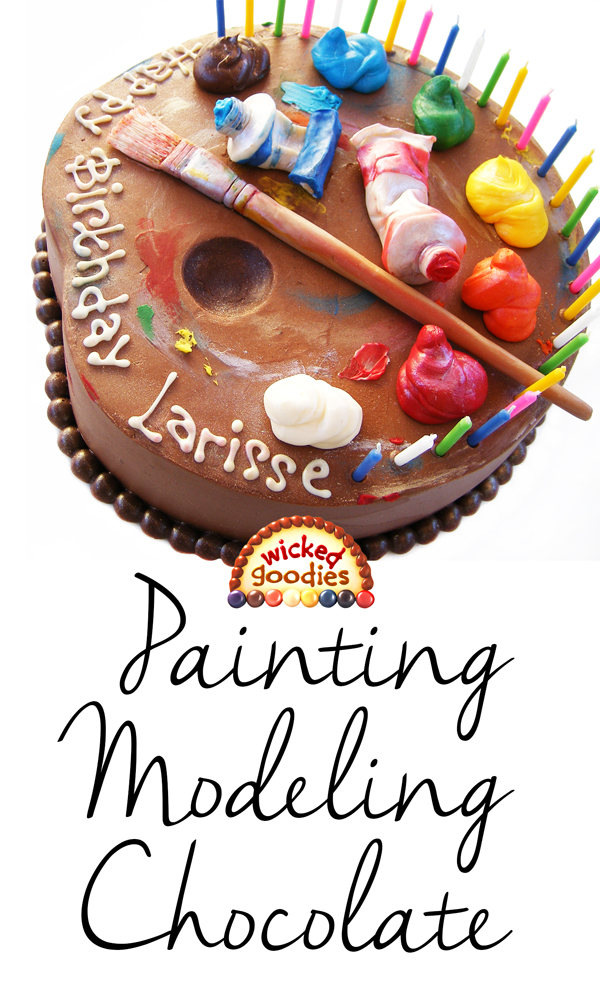
Powdered Food Coloring
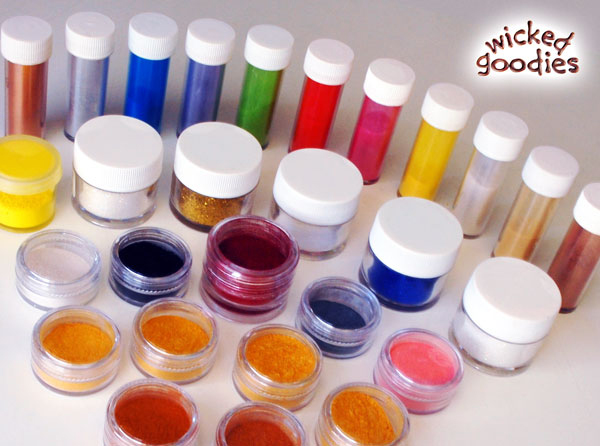
Powdered colors work well for dry painting accents onto modeling chocolate. Note that modeling chocolate is the most receptive to powdered colors when it’s freshly rolled or modeled.

Right after modeling chocolate has just been handled, it’s soft from the heat of your hands, which makes it tacky so that powdered colors cling. You may use a small paint brush to add details or a blush brush to cover larger surface areas.
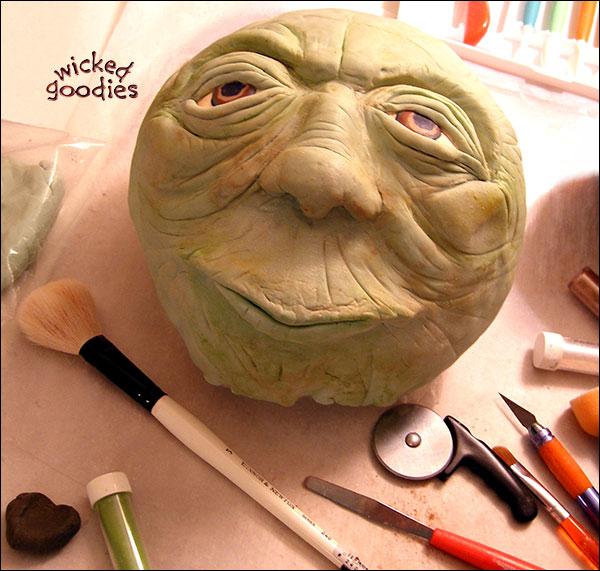
The modeling chocolate head featured above, which was molded first on a styrofoam ball before being transferred onto the cake, was accented with green pearl dust, pink pearl dust and cocoa powder.
Cocoa Powder

Cocoa powder makes an excellent coloring agent when you want to add contour or shading to modeling chocolate as well as to fondant and gumpaste.
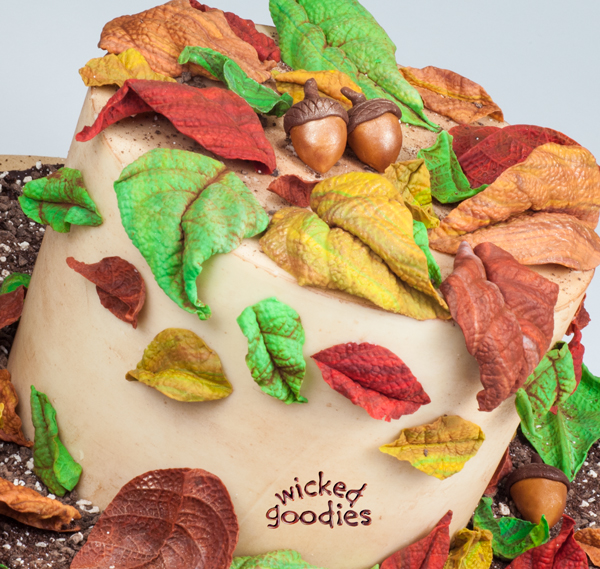
Use it to make a cake decoration look dirty, sandy, antique, weathered, skin-like, hide-like, shadowy or worn. In the above example, the modeling chocolate leaves were brushed with cocoa powder to enhance the detail of their veins. In the example below, modeling chocolate fairy flowers were dry brushed to give them shadow and sheen.
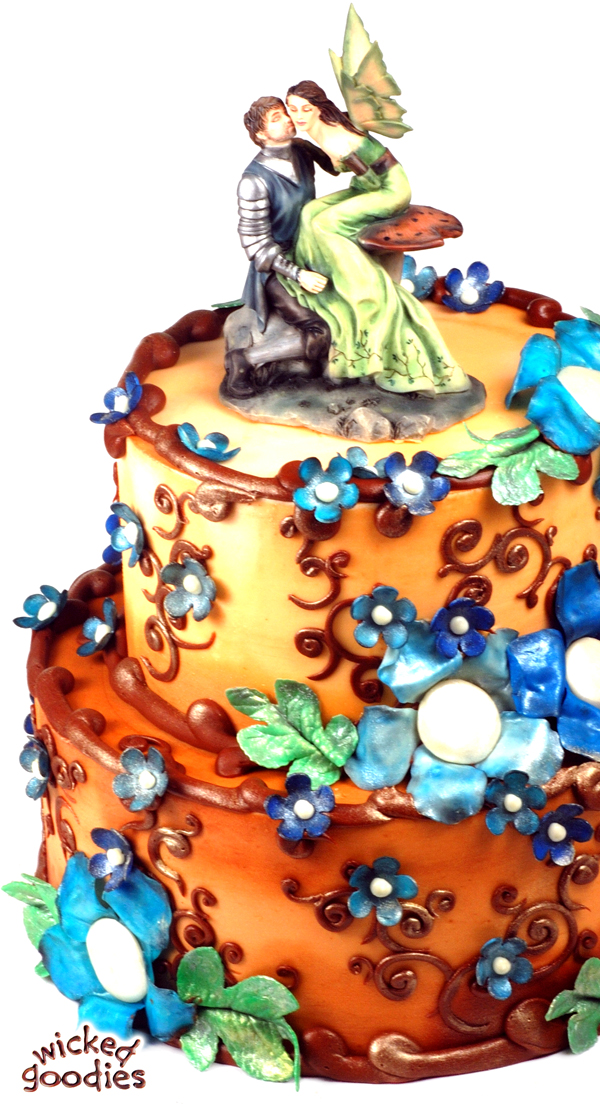
To keep a modeling-chocolate-covered cake dry while still holding it in the refrigerator, seal its surface under plastic wrap until it’s time to paint on the cake. Once you’ve painted the cake, don’t put plastic wrap on it again. Painted modeling chocolate is prone to smudging and should not be touched after the job is complete.
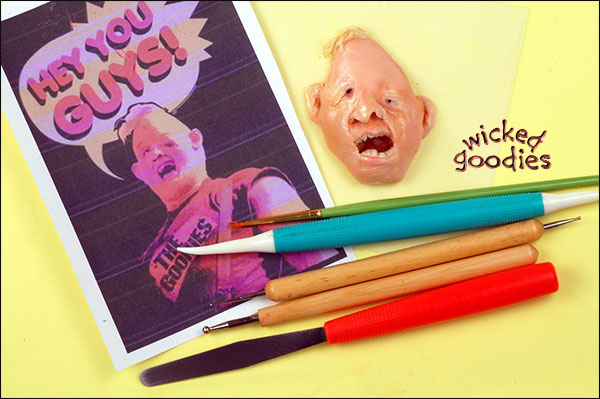
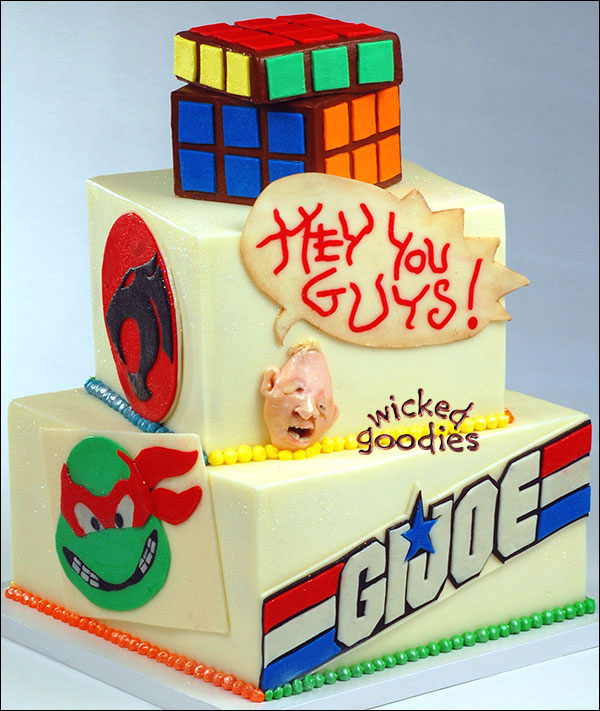
Using Powdered Food Color as a Paste: You can mix powdered colors or luster dusts with vodka or cocoa butter to make a wet paste. When modeling chocolate is too dry to accept powdered colors or when you want the color to go on thick, this method works well. It also allows for added detail and control.
Gel and Liquid Food Coloring

Painting onto modeling chocolate with gel or liquid food coloring is feasible but not ideal. The liquids tend to bead on the surface of modeling chocolate. You may have to paint over your design a few times in order to make it crisp. For this reason, liquid food coloring is not ideal for painting on modeling chocolate. Gel colors work better but may still be a challenge. In the whiskey bottle below, I hand painted the label using titanium dioxide (natural white food coloring). The color was too liquid for working on modeling chocolate so I thickened up its consistency with a little corn starch.

Airbrush Color
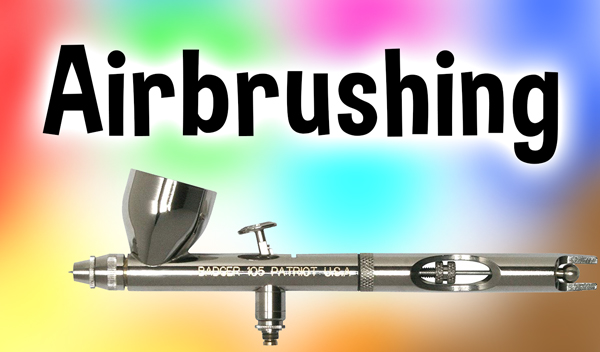
Airbrushing onto modeling chocolate may also result in the liquid beading on the surface, but it can still be done. Don’t airbrush heavily – going light is the key. Follow the tip above to achieve optimal results with an airbrush machine.
Edible Markers
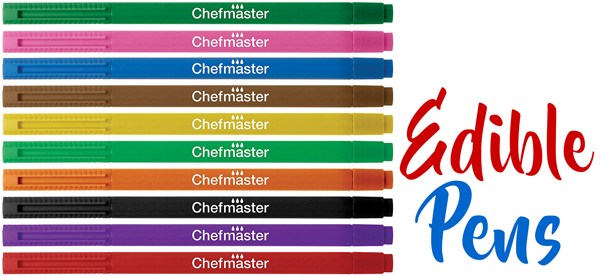
Edible markers are not the most compatible with modeling chocolate for the same reason that liquid colors are more difficult to apply. They also work best when the modeling chocolate is dry on the surface and dusted with cornstarch.

Cake Decorating with Modeling Chocolate
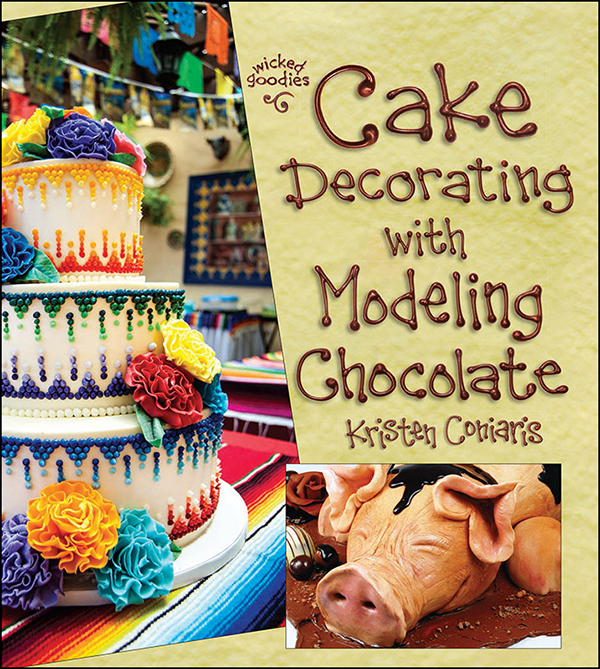
You might also enjoy
Marbleized Modeling Chocolate Patterns
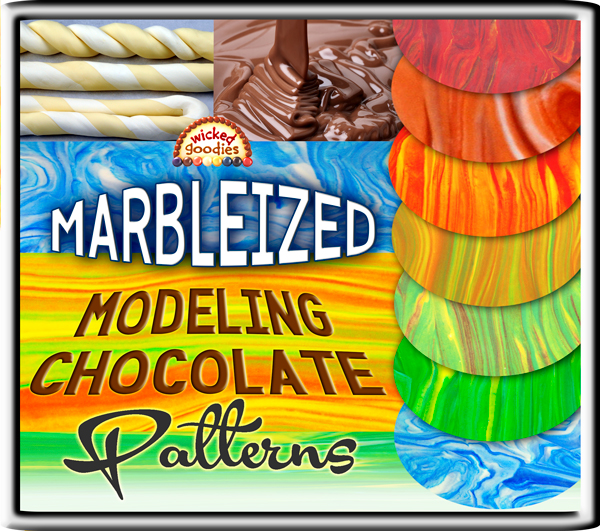
Smooth Buttercream Cake Frosting
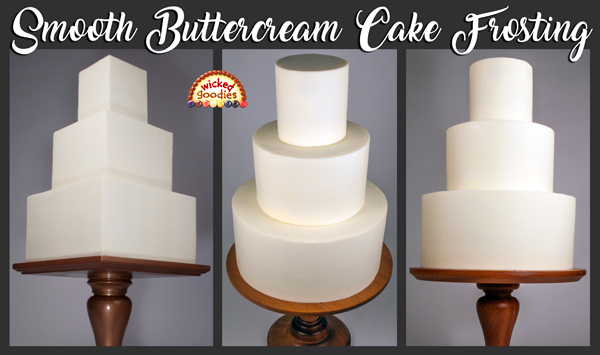 Piping with Paper Cones
Piping with Paper Cones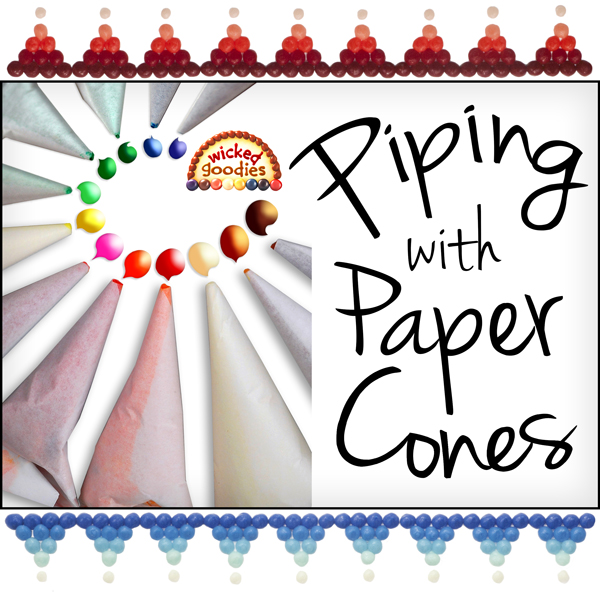




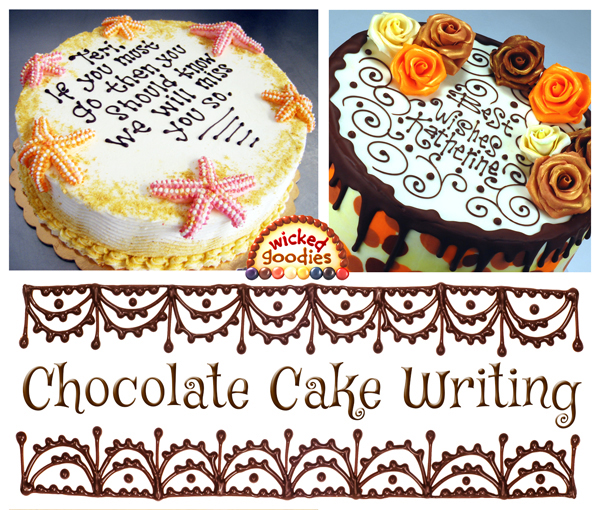
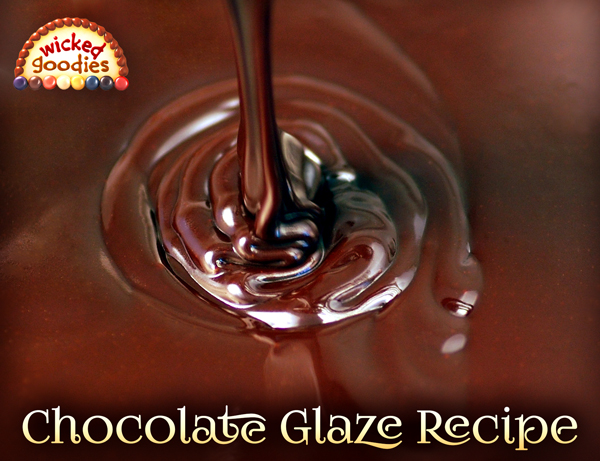
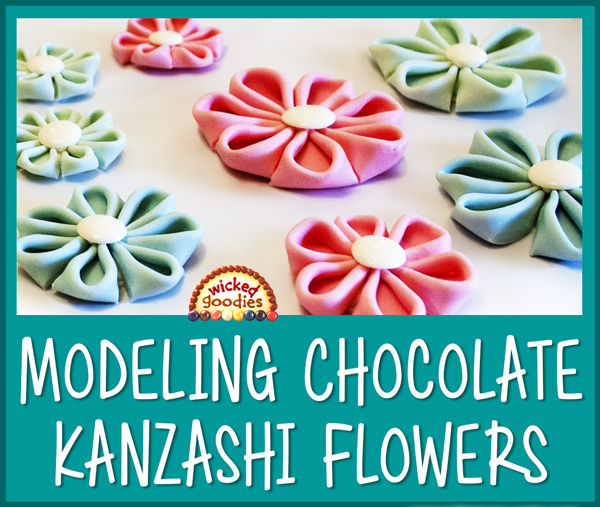
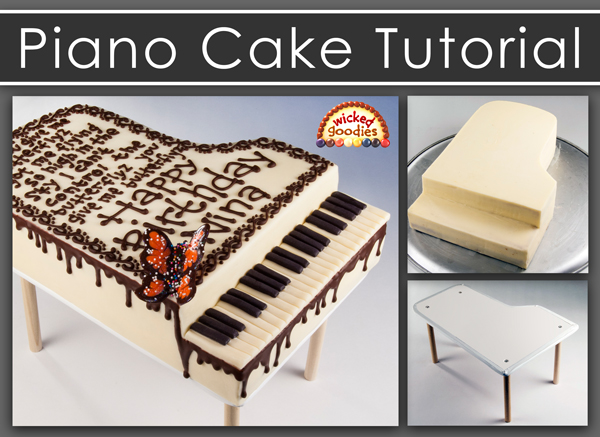
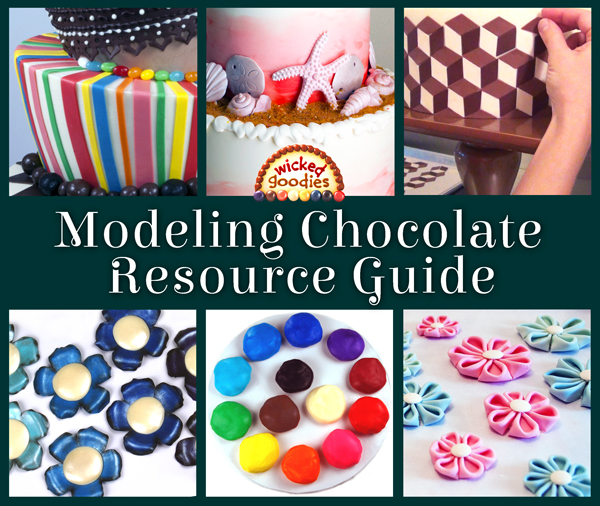
Thank you for such a comprehensive explanation of coloring modeling chocolate. I have a question. I am interested in making a sculpture of pure modeling chocolate with the intent that it never be eaten. Basically, I just want it on display. I am concerned about using any wet paints due to mold. Do you think that dusts and colored cocoa butter would hold up to not molding if it was placed in a sealed acrylic display case?
I have made white and milk chocolate sweet in a mould, how can I colour the details on top once they have set
Hi Kristen, thank you for your hard work with website and your funny and very informative YouTube videos!
I could not find this info anywhere else, since it’s seems that majority of bakers in US use candy melts instead of real chocolate. I use only real Belgian White chocolate, and off coarse it has slight off white, yellowish color. I feel this yellowish hue, doesn’t let me to achieve bright vibrant colors. I tried to use different gel coloring. Americolor seems to work the best, but some colors still don’t look as I want them to be. And plus they change. So I decorate baby shower cake with pastel blue…cover cake put it in fridge…. Few hours later it’s light teal….
I really don’t want to switch to candy melts ( howerver thinking maybe for figurines, due to price). If I color MC with white color first, it breaks too easy. Titanium dioxide works better though ..
Please suggest. Thank you
Natasha,
That is a common food dilemma. The same issue applies to butter/shortening. You choice will always be butter and quality chocolate over achieving accurate colors. There is no solution when it comes to chocolate (as far as I know).
In my opinion, taste is more important but I suppose you could make your decision on a case-by-case basis depending on which the customer prefers.
I have found that my clients are very impressed when I tell them that I cannot get clear colours due to the high cocobutter content of quality chocolate I use in all my baking rather than using cheap chocolate which congeels on your palate due to hard fat. Nobody has ever chosen the cheap alternative.
Thank you for the tip with regards to using corn flour with liquid colour on modelling chocolate, you saved me from my serious frustration with it.
thank you very much!
Hi there thank you for this. What about cocoa butter colours? surely that will adhere swimmingly, since it’s almost of the same fat content? Thanks again
Yes – you can mix melted cocoa butter with powdered colors to make a quick drying paste. The best investment of your money is to buy powdered colors separately from cocoa butter then make small batches of cocoa butter color whenever you need it. That way, the colors can be used for both wet and dry applications.